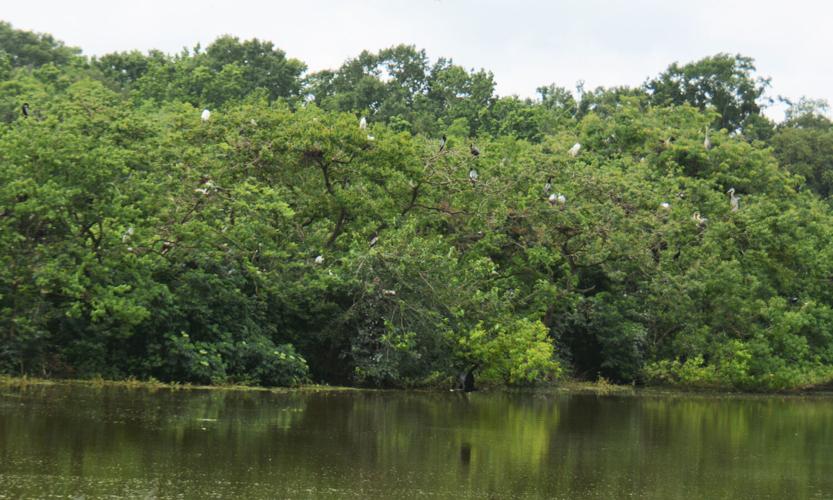Nature-based improvements to forests and wetlands in seven national wildlife refuge complexes and five state wildlife management areas in Louisiana will be funded with more than $3.9 million of federal Inflation Reduction Act money, the U.S. Fish & Wildlife Service announced recently.
The projects are included in $17 million in IRA grants targeting areas in Louisiana, Arkansas, Mississippi and Tennessee that are part of the Lower Mississippi River Valley that the FWS has identified as being affected by adverse weather events.
The grants will prioritize projects that promote coastal resilience and climate adaptation and address invasive species threats, and that will provide data needed to support future natural resource resilience, the agency said.
About $2.6 million will fund “ecological forestry to promote climate resilience” at Bayou Sauvage Urban National Wildlife Refuge in New Orleans East, Black Bayou Lake National Wildlife Refuge in Monroe, D’Arbonne National Wildlife Refuge just northwest of Monroe, other refuges that are part of the North Louisiana Refuge Complex, and Tensas River National Wildlife Refuge near Winnsboro in northeast Louisiana.
Participating in the projects in those refuges will be the FWS, Louisiana Department of Wildlife & Fisheries and the Arbor Day Foundation.
At Bayou Sauvage, funds are aimed at restoring more than 1,400 acres of the Little Pine Island Tract, stretching from Michoud Highway to the Oak Island Subdivision. That land is part of 2,400 acres of former New Orleans East Inc. property that was purchased by the refuge from New Orleans developer John Cummings in 2022.
Refuge manager Pon Dixson said the plan is to remove invasive species, including tallow and Chinaberry trees, and replant the area with native species, including bitter pecan, ficus, loblolly and sugarberry trees.
The plantings will be chosen with an eye on their ability to sequester carbon, and to reduce heat stress and wildlife risk.
At Tensas River NWR, funds will be used to thin more than 500 acres of bottomland hardwood plantations to promote a resilient forest capable of enhanced carbon sequestration. The changes are aimed at benefiting air quality, and wildlife, migratory birds and wintering waterfowl.

Inflation Reduction Act funds will be used to thin forests on the Tensas River National Wildlife Refuge to improve the ability of larger trees to capture and sequester carbon emissions to reduce global warming. The improvements also are expected to benefit wildlife, officials say. (Photo courtesy of the U.S. Fish & Wildlife Service)
At the North Louisiana NWR complex, the money will pay for equipment needed to thin hardwood bottomland forest species, which will help ongoing forest management and reduce woody debris, again with an eye on improving the trees’ ability to sequester carbon, and provide habitat for wildlife.
At Black Bayou Lake NWR, more than 500 acres of bottomland hardwood plantations will be thinned, again to enhance carbon sequestration, benefit air quality and promote wildlife.
For D’Arbonne NWR, the funds also will be used to thin almost 500 acres of bottomland hardwood forest to enhance carbon sequestration, improve air quality and benefit wildlife.
At the Upper Ouachita refuge, nearly $592,000 will be used to restore Steep Bank Creek by removing an earthen dam and other barriers to natural water flow and water control. Debris, log jams and beaver dams also will be removed, and the creek and creek bank will be cleared from the Ouachita River north to the Arkansas state line.

Inflation Reduction Act funds will be used to thin vegetation in hardwood bottomland forests in the North Louisiana National Widlife Refuge Complex to improve the forests' ability to capture and sequester carbon emissions linked to global warming. (Photo courtesy of the U.S. Fish & Wildlife Service)
The wetland and floodplain restoration efforts are aimed at improving forested wetlands needed for flood control, and to support resident wildlife, migratory birds and waterfowl. Refuge personnel will partner with local industry and the Arkansas Game and Fish Commission to restore about 10,000 acres of wetlands.
The IRA funds also will be used for improvements at the Southwest Louisiana National Wildlife Refuge Complex, which includes the Cameron Prairie and Lacassine NWRs. Work will include upgrading levees, water control structures, and other water control features, while also removing water flow barriers, including accumulated debris and overgrown vegetation.
This project should reduce weather-related damage, including flooding, in nearby communities, while also improving habitat for wildlife.
The Louisiana Department of Wildlife & Fisheries will also pair with the Fish & Wildlife Service in a $750,000 forestry enhancement project aimed at preserving bottomland forests in the state’s Boeuf, Dewey Wills, Richard K. Yancey, Russel Sage, and Sherburne Wildlife Management Areas.
That project will include selective forest thinning on 2,500 acres and removal of invasive plants on 400 acres to help improve outdoor recreation.






